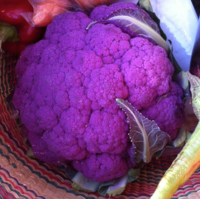
Photo from wikipedia
The strategy for breeding blueberries has been based on phenotypic selection without accounting for pedigree correlation information. A central premise of classical quantitative genetics is that through knowledge of the… Click to show full abstract
The strategy for breeding blueberries has been based on phenotypic selection without accounting for pedigree correlation information. A central premise of classical quantitative genetics is that through knowledge of the relationships among individuals in a population, we can make inferences about breeding values (BVs), estimate genetic parameters, and support phenotypic selection. Genetic evaluations using best linear unbiased prediction (BLUP) and restricted maximum likelihood (REML) are founded on pedigree information and have been the standard method used in livestock and forest breeding. Despite theoretical and practical benefits, their application in blueberry breeding programs remains unexploited. The objective of this study was to evaluate the use of REML/BLUP in the University of Florida blueberry breeding program in order to estimate genetic parameters and predict BVs of primary selection traits. To do this, we collected phenotypic data for eight selectable traits (yield, flower bud density, fruit weight, fruit firmness, fruit diameter, fruit soluble solids, fruit pH, and fruit scar diameter) from 1996 individuals. The highest narrow-sense heritabilities were found for fruit weight, scar diameter, and yield. The majority of genetic correlations between traits were under 0.20. The largest genetic gain was achieved when selections from early stages were used as parents and the top 5% of the population was selected. Compared to traditional phenotypic selection, our results are evidencing of the importance of implementing REML/BLUP to estimate genetic parameters that help and support the breeding strategy and maximize genetic gains.
Journal Title: Euphytica
Year Published: 2018
Link to full text (if available)
Share on Social Media: Sign Up to like & get
recommendations!